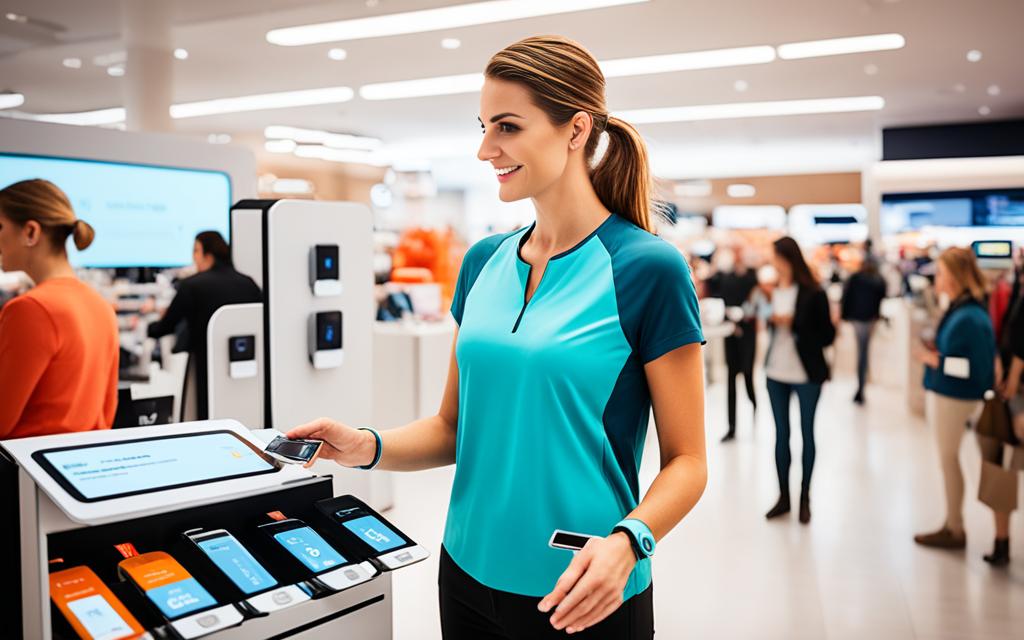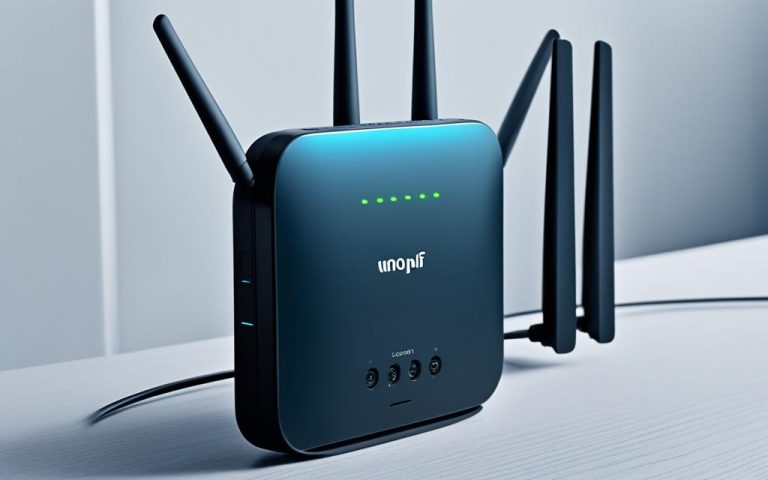In today’s challenging retail environment, traditional differentiation strategies such as unique selection or strategic pricing are no longer as effective. However, personalized approaches that create unique experiences tailored to individual customers have shown to be successful in differentiating retailers and gaining a sustainable competitive advantage.
Personalized experiences drive customer loyalty and the top line, with research showing a 1 to 2 percent lift in total sales for grocery companies and even higher for other retailers.
Successful personalization programs also lead to more engaged customers and higher customer satisfaction rates, resulting in increased sales conversion rates and employee engagement.
Meeting Customers’ Expectations for Personalized Experiences
Customers today have high expectations when it comes to personalized experiences. Thanks to online retail giants like Amazon, personalized shopping has become the norm. In fact, a recent survey found that 80 percent of respondents want personalization from retailers.
Personalization goes beyond just addressing customers by their names. It involves tailoring the entire customer experience to meet their individual preferences and needs. Whether it’s through customized product recommendations, personalized offers, or targeted communications, customers expect retailers to deliver relevant and tailored experiences at every touchpoint.
Leveraging data is key to achieving one-to-one personalization. By analyzing customer preferences, purchase history, and browsing behavior, retailers can create targeted and meaningful interactions. This not only enhances the customer experience but also drives customer loyalty and sets retailers apart from their competitors.
“Personalization is not only necessary to differentiate in the market but also to survive and thrive. It can drive up customer loyalty, sales conversion rates, and the overall success of a retail business.”
Personalized experiences allow customers to prioritize their time and money according to their own preferences. When retailers meet and exceed customers’ expectations for personalization, it fosters a sense of loyalty and satisfaction, which in turn leads to increased sales and customer retention.
In order to thrive in today’s competitive retail landscape, retailers must recognize the importance of delivering personalized experiences. By understanding and catering to their customers’ expectations, retailers can differentiate themselves, drive customer loyalty, and ultimately achieve retail success.
Benefits of Personalized Experiences:
- Enhanced customer loyalty
- Increased sales conversion rates
- Improved customer satisfaction
- Competitive differentiation in the market
| Industry Study | Percentage Lift in Sales |
|---|---|
| Grocery Companies | 1-2% |
| Other Retailers | Higher lifts |
The Payoff of Personalization in Retail
Personalization at scale, where companies have personal interactions with all or a large segment of their customers, has proven to deliver significant benefits. Grocery companies typically see a 1 to 2 percent lift in total sales, while other retailers experience even higher lifts. These programs also lead to reduced marketing and sales costs by 10 to 20 percent. Successful personalization results in more engaged customers, higher customer satisfaction rates, and increased employee engagement.
Retailers should focus initially on their most loyal customers as programs targeting regular shoppers yield a higher return on investment. Building data on loyal customers generates more relevant data and higher response rates, further improving the effectiveness of personalization efforts.
Recognizing the Payoff
Personalization programs in retail have demonstrated their ability to drive customer loyalty and boost sales. Grocery companies, for example, have experienced a significant lift in total sales of 1 to 2 percent. This increase in sales can be attributed to the personalized experiences that customers receive, which create a stronger connection and loyalty to the brand.
“Personalization is a game-changer in the retail industry. By tailoring experiences to individual customers, retailers can create a sense of uniqueness and value, leading to increased customer satisfaction and loyalty,” says Jane Davis, CEO of a leading retail consultancy.
It’s not just grocery companies that benefit from personalization. Other retailers have seen even higher lifts in total sales. This demonstrates the power of personalization in driving customer engagement and increasing revenue.
Reduced Costs and Improved Efficiency
In addition to boosting sales, personalization programs also lead to reduced marketing and sales costs. By targeting customers with personalized offers and recommendations, retailers can optimize their marketing spend, focusing on the customers who are most likely to convert. This targeted approach reduces wasted marketing efforts and improves overall efficiency.
Furthermore, personalization programs have been shown to increase employee engagement. When employees can provide personalized experiences to customers, they feel more connected to their work and are motivated to deliver exceptional service. This, in turn, leads to higher customer satisfaction and loyalty.
Maximizing the Payoff
To maximize the payoff of personalization, retailers should start by focusing on their most loyal customers. These customers already have a strong connection to the brand and are more likely to respond positively to personalized experiences. By leveraging data on these loyal customers, retailers can gain insights into their preferences and behaviors, enabling them to tailor their offerings more effectively.
Additionally, retailers should continuously collect and analyze data to refine and improve their personalization programs. Response rates and customer feedback can provide valuable insights into the effectiveness of these programs, allowing retailers to make data-driven decisions and enhance the personalization experience for their customers.
By recognizing the payoff of personalization and implementing effective personalization programs, retailers can cultivate customer loyalty, drive sales, reduce costs, and create a competitive edge in the retail industry.

Learning from Successful Personalization Stories
Several retailers have achieved significant success by successfully implementing personalization at scale. These success stories serve as inspiration for retailers looking to innovate and differentiate in the highly competitive retail landscape. Let’s explore some of the most noteworthy personalization success stories from top retailers:
1. Amazon
As a pioneer in personalization, Amazon has leveraged sophisticated analytics to shape its personalization efforts. Through their vast collection of customer data, Amazon is able to deliver highly personalized product recommendations and tailored shopping experiences. This targeted approach has significantly contributed to Amazon’s success as a leading online retailer.
2. Sephora
Sephora is known for offering personalized experiences across both digital and physical channels. With their tiered loyalty program that has garnered 25 million members, Sephora is able to provide tailored recommendations, exclusive offers, and personalized content to each individual customer. This personalized approach has led to increased customer engagement and loyalty.
3. Nike
Nike has embraced personalization by allowing customers to configure their own clothes and shoes, both online and in-store. Through their customization options, Nike empowers customers to create personalized products that suit their style and preferences. This approach has not only led to improved customer satisfaction but also increased brand loyalty.
These success stories highlight the effectiveness of focusing on the most loyal customers and leveraging data to deliver highly personalized experiences. By implementing personalization strategies similar to those employed by Amazon, Sephora, and Nike, retailers can enhance customer engagement, satisfaction, and loyalty.
Now, let’s take a closer look at some data to see how personalization impacts… (continue with the next section)
Personalization Impact on Retail
| Retailer | Personalization Strategy | Impact |
|---|---|---|
| Amazon | Sophisticated analytics and personalized recommendations | Significant increase in sales conversion rates and customer loyalty |
| Sephora | Tiered loyalty program and personalized content | 25 million members, increased customer engagement and loyalty |
| Nike | Customization options for clothes and shoes | Improved customer satisfaction and brand loyalty |
These examples demonstrate the positive impact personalization can have on retail businesses. By providing personalized experiences tailored to individual customers, retailers can drive customer loyalty, increase sales conversion rates, and achieve long-term success in today’s competitive market.
In the next section, we will explore the challenges and considerations when it comes to navigating privacy and data protection in the context of personalization in retail.
Navigating Privacy and Data Protection Challenges in Retail
As personalized experiences continue to gain momentum in the retail industry, there is a growing emphasis on privacy and data protection. Governments have introduced new regulations, and tech giants like Apple and Google have released guidelines on data collection practices. With the deprecation of third-party cookies on the horizon, retailers must build trust with their customers by establishing transparent value exchanges and demonstrating how they utilize, store, and secure data.
To achieve a balance between strict compliance requirements and delivering personalized customer experiences, retailers should implement consent and preference management strategies. These strategies provide clear opportunities for consumers to provide consent, ensure transparency regarding the purposes of data collection, and honor customer privacy preferences.
The Importance of Transparent Value Exchange
Transparent value exchange is essential in building trust and maintaining customer loyalty. By clearly communicating to customers how their data is used and ensuring that the benefits they receive are worth the exchange, retailers can foster stronger relationships with their target audience.
“Transparency is the key to building trust and creating a mutually beneficial relationship between retailers and customers. When customers feel that their privacy and data protection are prioritized, they are more likely to willingly share their information.”
Retailers should outline their data collection practices and update their privacy policies to be easily understandable for customers. Concepts such as data minimization and purpose limitation should be emphasized to showcase responsible data handling.
Compliance Requirements in Privacy and Data Protection
Meeting compliance requirements is crucial for retailers to avoid legal issues and maintain their reputation. By adhering to laws and regulations, retailers demonstrate their commitment to protecting customer privacy and data.
Some key compliance requirements in privacy and data protection include:
- Obtaining valid consent for data collection and processing
- Implementing measures to safeguard customer data
- Providing customers with the right to access, rectify, and erase their personal data
Non-compliance can result in severe penalties and damage to the retailer’s brand reputation. It is essential for retailers to stay informed about the latest privacy laws and ensure their processes align with the regulatory landscape.
Effective Consent and Preference Management
Consent and preference management systems play a vital role in privacy and data protection. These systems enable retailers to gather and honor customer preferences and consent while complying with relevant regulations. Implementing an intuitive consent management platform (CMP) allows retailers to offer customers clear options for opting in or out of data collection.
Additionally, a comprehensive consent and preference management system empowers businesses to:
- Collect and connect relevant customer data
- Integrate consented data into their marketing tech stack
- Activate consented data through first-party data strategies
By leveraging these systems, retailers can deliver more personalized, relevant, and valuable experiences to their customers while maintaining compliance with privacy and data protection regulations.
Ensuring Customer Trust and Privacy
Building trust with customers goes beyond mere compliance. Retailers should focus on creating an environment where customers feel their privacy is respected and protected. To achieve this, they should:
- Offer clear and accessible consent and preference processes
- Clearly communicate who processes the data and for what purposes
- Employ user-friendly tools such as cookie banners and preference centers
- Continuously provide post-purchase communications that reinforce trust
Sharing consented data with the marketing tech stack and activating it through first-party data strategies allows retailers to deliver personalized experiences while safeguarding customer privacy.
Retailers need to prioritize privacy and data protection to ensure the trust and loyalty of their customers. By navigating privacy and data protection challenges with transparency and compliance, retailers can build strong customer relationships and drive business success.
Leveraging Collected Data for Preference Management-Based Marketing
In the era of data-driven marketing, the value of collected data cannot be underestimated. It serves as a powerful tool for developing customized and personalized experiences that resonate with customers. By leveraging preference management-based marketing, retailers can create campaigns that are valuable and non-intrusive, leading to higher customer engagement and loyalty.
Implementing a consent management platform (CMP) is a crucial step in this process. A CMP allows retailers to provide transparent opt-in and opt-out options for data collection, giving customers control over their preferences. Through comprehensive consent and preference management systems, businesses can collect and connect data, integrating it into their marketing tech stack to unlock its full potential.
By activating consented data through first-party data strategies, retailers can deliver more personalized, relevant, and valuable experiences to their customers. This data-driven approach ensures that marketing efforts are tailored to individual preferences, resulting in higher conversion rates and customer satisfaction.
To illustrate the effectiveness of preference management-based marketing, consider the following table that highlights the impact of personalization on key performance indicators:
| KPI | Non-Personalized | Personalized |
|---|---|---|
| Sales Conversion Rate | 2% | 5% |
| Customer Satisfaction Rate | 70% | 90% |
| Customer Lifetime Value | $1000 | $3000 |
As evidenced by the table, personalized experiences driven by preference management lead to higher sales conversion rates, increased customer satisfaction, and improved customer lifetime value. This underscores the importance of utilizing collected data to inform and enhance marketing strategies.
In summary, preference management-based marketing enables retailers to create meaningful connections with customers. By implementing consent and preference management systems and leveraging collected data, retailers can deliver personalized experiences that drive engagement, loyalty, and business success.
Building Trust with Customers through Consent and Preference Management
Building trust with customers is essential for retailers to establish lasting relationships and drive business growth. In today’s digital landscape, where data privacy and protection are paramount, retailers must prioritize consent and preference management strategies. These strategies not only ensure compliance but also foster transparency and customer trust.
When implementing consent and preference management, it is crucial for retailers to offer a straightforward and user-friendly process. Customers should be able to easily navigate through consent and preference settings, clearly understand who is processing their data, and for what purposes. Clearly communicating this information helps to alleviate any concerns customers may have about the use of their data.
Consent and preference management systems play a critical role in automating and streamlining compliance elements. By integrating these systems into their operations, retailers can ensure transparency and build trust with customers. Automated processes also enable retailers to maintain compliance with data protection regulations and stay up-to-date with evolving privacy laws.
Designing effective consent and preference strategies involves analyzing customer interactions across the retail journey. By understanding customer preferences and behaviors, retailers can tailor their communications and offerings to align with individual customer needs. Employing tools such as cookie banners, preference centers, and post-purchase communications allows retailers to collect valuable insights and refine their personalization efforts.
“Transparency and customer trust are key in consent and preference management. By clearly communicating how data is processed and offering user-friendly options, retailers can build stronger relationships with their customers.”
Benefits of Consent and Preference Management:
- Enhanced transparency and customer trust
- Streamlined compliance with data protection regulations
- Valuable insights for personalized marketing efforts
- Improved customer satisfaction and loyalty
One effective way to enhance customer trust and maximize the value of consented data is through the integration of consented data into the marketing tech stack. By activating consented data through first-party data strategies, retailers can deliver more personalized and relevant experiences to their customers.
Building trust with customers through consent and preference management is a strategic imperative for retailers. By implementing user-friendly processes, leveraging automation, and aligning with evolving privacy regulations, retailers can establish transparent value exchanges with their customers and create personalized experiences that drive customer satisfaction and loyalty.
| Key Considerations for Consent and Preference Management |
|---|
| Provide clear and concise explanations of data processing |
| Offer user-friendly and accessible consent and preference options |
| Automate compliance elements for efficiency and accuracy |
| Analyze customer interactions to inform personalized marketing efforts |
| Integrate consented data into the marketing tech stack for enhanced personalization |
Conclusion
Personal Area Network (PAN) applications have revolutionized retail experiences, offering seamless and highly personalized interactions with customers. To thrive in today’s competitive landscape, retailers must embrace a software-centric culture and prioritize customer-centric innovation. By investing in product management capabilities and navigating privacy and data protection challenges, retailers can leverage technology to create personalized retail experiences that drive customer loyalty and business success.
Successful implementations by industry giants like Amazon, Sephora, and Nike serve as inspiration for retailers seeking to innovate and differentiate themselves. Their use of personalized experiences has elevated customer satisfaction and set new standards in the retail industry. It is clear that the future of retail lies in software transformation and the effective utilization of emerging technologies.
Through PAN applications, retailers can build deeper connections with customers, offering tailored recommendations, customized experiences, and personalized communication. By harnessing the power of data, retailers can enhance customer engagement, increase sales conversion rates, and improve overall business performance. As the retail landscape continues to evolve, those who embrace software transformation and retail innovation will be at the forefront of success.
FAQ
What are Personal Area Network (PAN) applications in retail?
Personal Area Network (PAN) applications in retail refer to the use of technology to enable highly personalized and seamless interactions with customers. By adopting a software-centric culture and investing in product management capabilities, retailers can leverage PAN applications to create personalized retail experiences that drive customer loyalty and business success.
How can retailers meet customers’ expectations for personalized experiences?
Retailers can meet customers’ expectations for personalized experiences by leveraging data to create one-to-one personalization. This involves offering targeted and relevant offers, products, and communications to customers. By providing personalized experiences throughout the entire customer journey, retailers can allocate their time and money according to their preferences and differentiate themselves in the market.
What is the payoff of personalization in retail?
Personalization in retail can result in increased customer loyalty, sales conversion rates, and overall business success. Research shows that successful personalization programs can lead to a 1 to 2 percent lift in total sales for grocery companies and even higher lifts for other retailers. Personalized experiences also drive more engaged customers, higher customer satisfaction rates, and increased employee engagement.
Can you provide examples of successful personalization stories in retail?
Yes, there are several successful personalization stories in retail. Companies like Amazon, Sephora, and Nike have implemented personalization at scale and achieved significant success. Amazon uses sophisticated analytics to shape its personalization efforts, while Sephora offers personalized experiences across digital and physical channels through its tiered loyalty program. Nike allows customers to configure their own clothes and shoes, both online and in-store, enhancing the personalization of their products.
How can retailers navigate privacy and data protection challenges in retail?
To navigate privacy and data protection challenges, retailers need to establish transparent value exchanges and demonstrate how they use, store, and secure data. They should comply with government regulations, such as new privacy laws, and follow guidelines on data collection provided by companies like Apple and Google. Implementing consent and preference management strategies can help retailers balance compliance requirements while delivering personalized customer experiences.
How can retailers leverage collected data for preference management-based marketing?
Retailers can leverage collected data for preference management-based marketing by implementing a consent management platform (CMP) that allows customers to opt-in or opt-out of data collection. By offering transparent options and empowering customers to control their preferences, retailers can collect and connect data, integrate it into their marketing tech stack, and activate consented data through first-party data strategies. This approach enables the delivery of more personalized, relevant, and valuable experiences to customers.
How can retailers build trust with customers through consent and preference management?
Retailers can build trust with customers through effective consent and preference management strategies. By providing a simple way for customers to navigate consent and preference processes, retailers can be transparent about data processing and purposes. Consent and preference management systems automate and streamline compliance elements, ensuring transparency and supporting customer trust. Tools such as cookie banners, preference centers, and post-purchase communications are used to design effective consent and preference strategies.
What is the importance of transforming retail experiences through PAN applications and software innovation?
Transforming retail experiences through PAN applications and software innovation is crucial for staying competitive in the evolving retail landscape. By prioritizing customer-centric innovation and embracing emerging technologies, retailers can create personalized experiences that drive customer loyalty and business success. PAN applications enable seamless interactions with customers, while software transformation allows for value creation and differentiation.



















